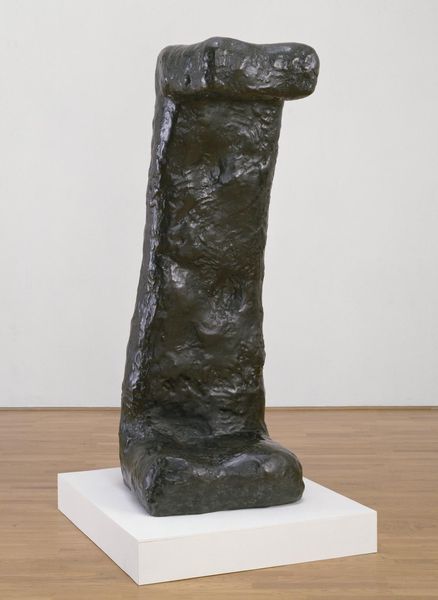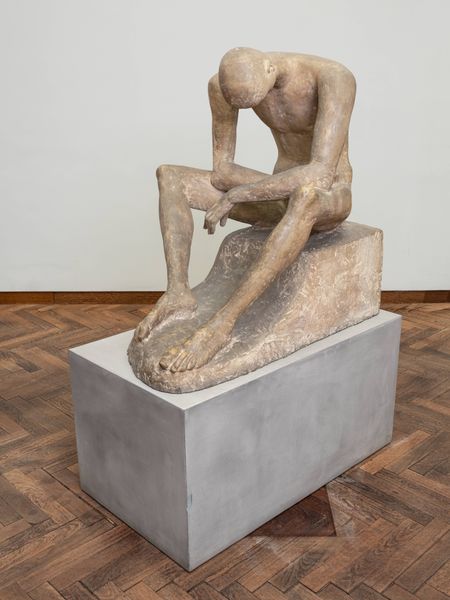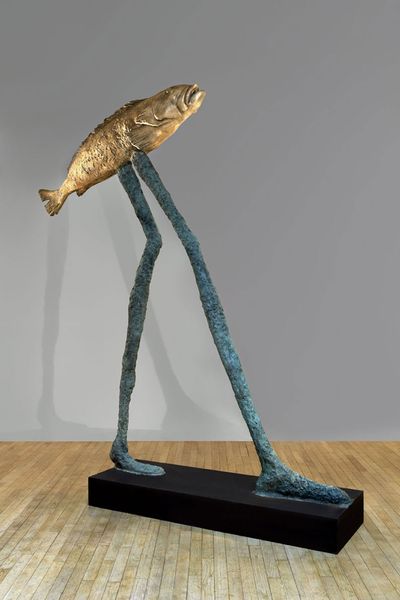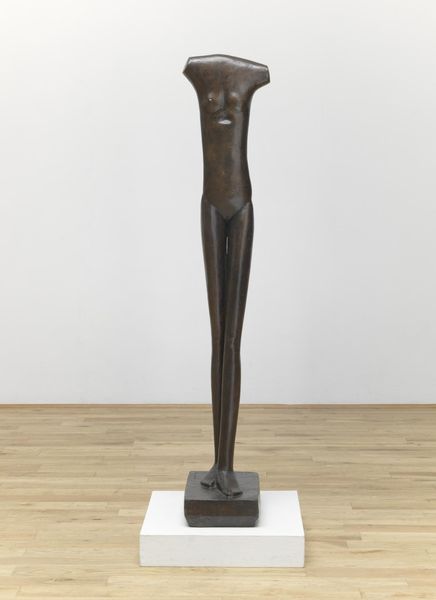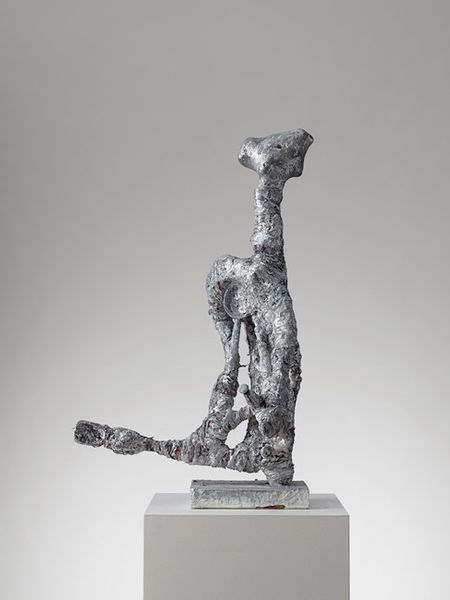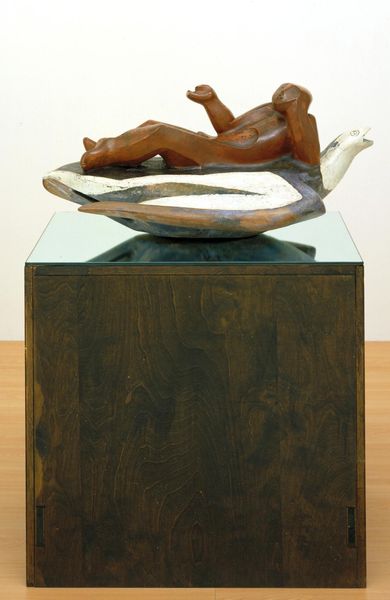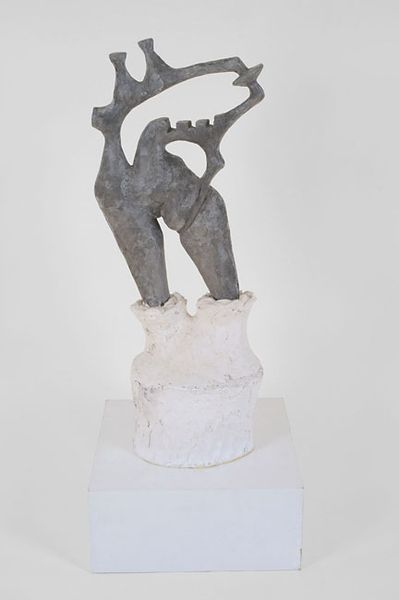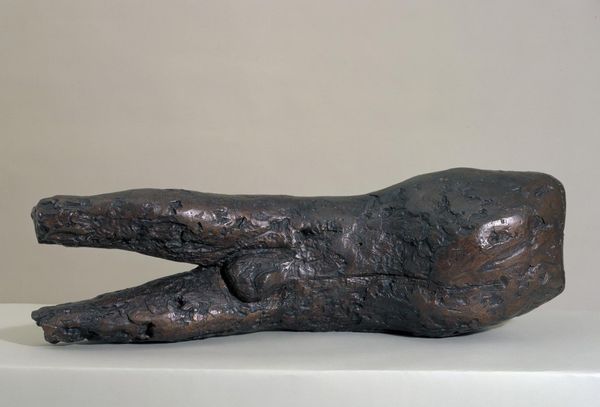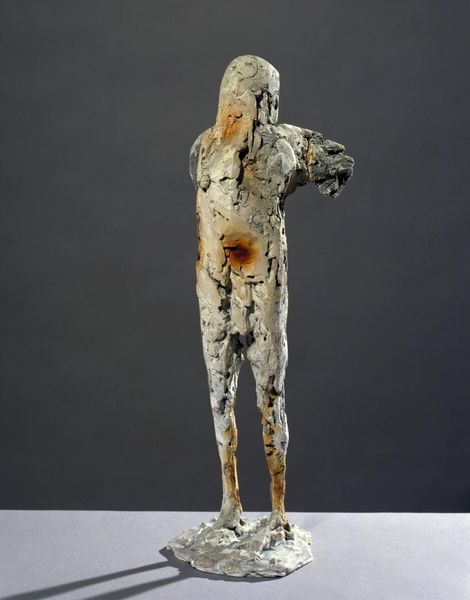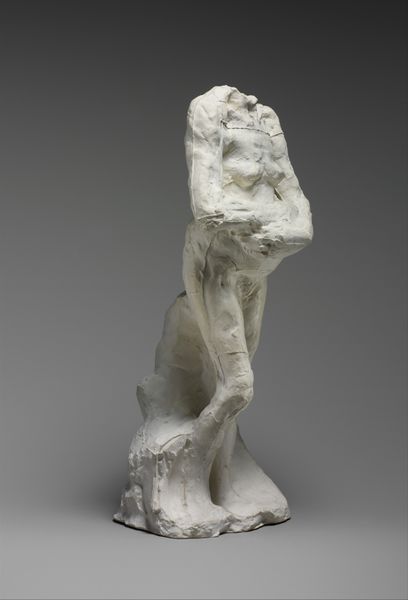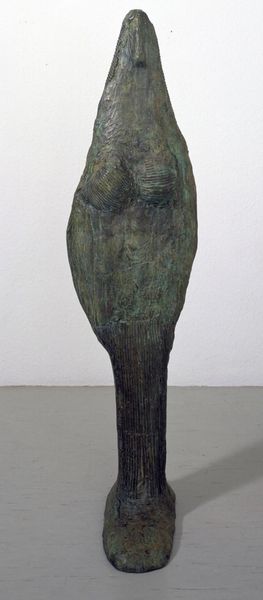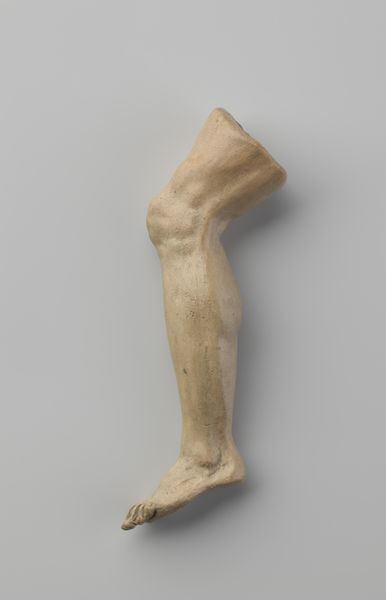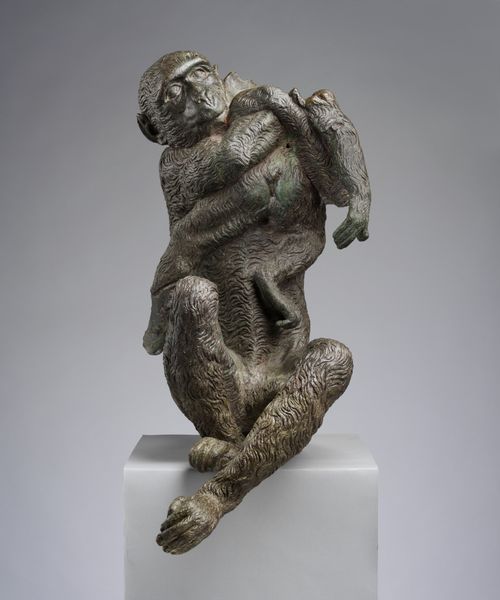
#
natural shape and form
#
rough brush stroke
#
sculpture
#
incomplete sketchy
#
sculptural image
#
possibly oil pastel
#
underpainting
#
abstract character
#
charcoal
#
watercolor
Copyright: Danh Vō,Fair Use
Editor: So, here we have Danh Vō's "Take My Breath Away" from 2017, a marble sculpture. I’m immediately struck by the fragmented nature of it – just a leg and a foot, presented so starkly. What’s your take on this piece? Curator: Well, the fragmentation is precisely where the power lies. Think about what gets remembered, what gets preserved, and who decides. This isn’t a complete, heroic figure; it's a ruin. What narratives are already in your mind about the fragment and its connection to western power and appropriation? Editor: I suppose the obvious comparison is to classical sculptures, like those we see in museums – often missing limbs or noses. Is Vō commenting on the legacy of colonialism, the way these objects have been removed from their original contexts? Curator: Precisely. Consider the power dynamics involved in the display of these fragmented antiquities. Vō is Vietnamese-born, so let's think about this work through the lens of post-colonial identity. The marble alludes to Western classical ideals, but the incompleteness subverts that very authority. How does this juxtaposition make you feel? Editor: It definitely complicates the idea of perfection, the way classical sculptures are often held up as ideals of beauty and form. By presenting a fragment, Vō challenges the viewers to consider this ideal through a perspective of destruction. Curator: Yes, and whose ideals are being centered, and at what cost? These broken forms stand in defiance of any singular reading, suggesting the violence inherent in claiming ownership of the past. Also, who decides what survives and how those surviving remnants can mean differently than the original intent of that sculpture. What do you think we can take away from this work in relation to historical objects and the power structures that allow us to see it today? Editor: I think I understand it better. It’s a commentary on cultural appropriation and the power imbalances inherent in how we view historical artifacts, using the fragment to ask some fairly brutal questions. Curator: Absolutely. The sculpture acts as a powerful statement on the selective narratives we inherit and our responsibility to critically examine them.
Comments
No comments
Be the first to comment and join the conversation on the ultimate creative platform.
